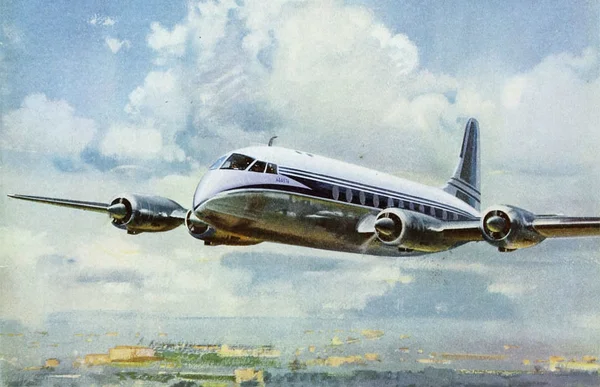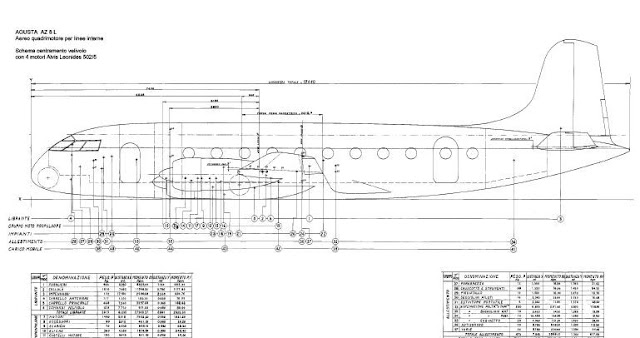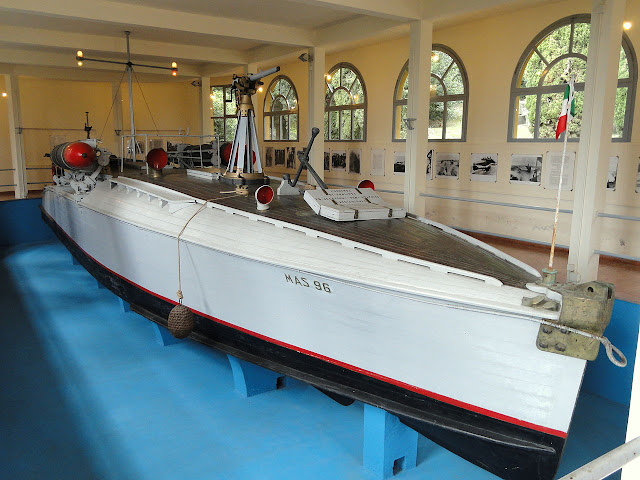Fondamentalmente si trattava di un motoscafo da 20 - 30 tonnellate di dislocamento (a seconda della classe), con una decina di uomini di equipaggio e armamento costituito generalmente da due siluri e alcune bombe di profondità antisommergibile, oltre a una mitragliatrice o a un cannoncino.
Nella prima guerra mondiale
I MAS, derivati dalla tecnologia dei motoscafi civili con 2 motori a benzina a combustione interna da 500 cavalli l'uno, compatti e affidabili, ebbero un'ampia diffusione nella Regia Marina durante la guerra del 1915-18. Montavano motori entro-fuoribordo di concezione automobilistica, di grande potenza ed efficienza, ad iniezione diretta, ovviando in tal modo ai problemi di carburazione del motore dovuti alla scarsa raffinazione del benzene usato come carburante. I primi modelli furono prodotti dalle officine Fraschini e furono successivamente modificati e prodotti dal Cantiere Orlando, di Livorno, da dove uscirono i MAS impiegati da D'Annunzio.
Alcuni esemplari (ad esempio quello usato da D'Annunzio e da Luigi Rizzo nella beffa di Buccari, azione di disturbo alla flotta austro-ungarica ancorata nella baia di Buccari), montavano due motori ridondanti, uno a servizio dell'altro, nell'ottica d'incremento puro d'efficienza e affidabilità del mezzo navale. Lo stesso D'Annunzio coniò dalla sigla MAS la locuzione latina Memento audere semper.
I MAS potevano essere utilizzati sia come pattugliatori antisommergibile, che come mezzi da attacco insidioso alle navi della flotta austro-ungarica, a seconda degli equipaggiamenti.
L'affondamento della Szent István
Un grande successo, conseguito dai MAS durante la prima guerra mondiale, fu l'affondamento presso Premuda, sulla costa dalmata, della corazzata Szent István, all'alba del 10 giugno 1918, durante un agguato condotto da Rizzo, che colpì a sorpresa la nave.
Mentre l'imbarcazione italiana si allontanava nella confusione, la Szent István accusò un colpo mortale. Nonostante fosse molto moderna e potente, non aveva una sufficiente protezione subacquea: le valvole di bilanciamento erano poco praticabili e posizionate sotto il ponte caldaie, praticamente inaccessibili, e dopo poco tempo si rovesciò, affondando.
L'azione della flotta austro-ungarica, indirizzata alla distruzione della barriera che nel basso Adriatico, nel Canale d'Otranto, imbottigliava i suoi sommergibili con una rete metallica lunga 60 km e una serie di schermi di pattuglia, venne annullata e, dopo di allora, non vi furono più tentativi degni di nota.
Dopo la guerra, i MAS continuarono ad essere sviluppati e migliorati, grazie ai motori della Isotta Fraschini.
Nella seconda guerra mondiale
I MAS della seconda guerra mondiale avevano velocità di circa 45 nodi, due siluri da 450 mm moderni e una mitragliatrice. Anche vecchie unità vennero usate, in teatri operativi come l'Africa Orientale Italiana.
Dopo alcuni decenni in cui la marina italiana, potente ma anche legata a mari assai chiusi e indicati per mezzi navali costieri, aveva impiegato mezzi veloci siluranti, ma con problemi dovuti all'indisponibilità di potenti motori a benzina, il problema della propulsione venne risolto con nuovi prodotti della Isotta-Fraschini, che consentirono la realizzazione di unità veloci e più efficienti. Nacquero così i MAS 500: nel 1940 ne erano in servizio 48 e ne furono prodotte 75 unità tra il 1937 e il 1941. Efficienti in acque assai calme, la loro carena tonda, però, non li rendeva adatti a mari più agitati.
All'entrata in guerra dell'Italia, la Regia Marina disponeva di tre flottiglie MAS: la Iª (nel 1941 ribattezzata Xª), la IIª e la IIIª. Tra gli eventi degni di nota, vi furono: il siluramento dell'incrociatore leggero Capetown sudafricano (sia il siluratore che il silurato erano residuati della guerra precedente); il fallito attacco al porto di Malta nel gennaio 1941, con la perdita di due motosiluranti di supporto alla missione; l'impiego nel Mar Nero contro la flotta sovietica, con alcuni sommergibili russi affondati quando sorpresi in superficie vicino alle basi; la battaglia di mezzo agosto, in cui i MAS contribuirono ad infliggere perdite di mercantili agli inglesi.
Tuttavia in quel periodo i MAS, unità veloci a scafo poco marino con chiglia assai piatta, simili a grossi motoscafi, erano ormai in declino. Essendo adatti a mari chiusi e poco mossi, come l'Adriatico, nel Mediterraneo entravano in gioco pesantemente la loro modesta tenuta al mare (e quindi la velocità effettivamente sostenibile), la loro limitata autonomia, i siluri e l'insufficiente armamento antiaereo (solo una mitragliera).
Le motosiluranti vere e proprie, con dislocamento elevato e carena a spigolo, quasi delle minitorpediniere con un dislocamento da 50 - 90 tonnellate, erano di fatto superiori. Così, nonostante fossero mezzi economici e leggeri, i MAS subirono un declino sostanziale nell'efficacia bellica durante la guerra, rendendo necessaria l'adozione di mezzi più potenti e costosi.
La cattura, nel 1941, di unità jugoslave costruite in Germania aiutò a risolvere il problema, con la realizzazione di 36 MS (motosiluranti e non più motoscafi anti sommergibile) da 60 t, propulsi però ancora da motori a benzina; questi mezzi, nel 1942 - 1943, si dimostrarono migliori, grazie alla loro maggiore massa ed alla carena a spigolo.
Il MAS nella Letteratura
Gabriele d'Annunzio, estimatore dell'audacia necessaria per operare a bordo di tali mezzi, utilizzò la sigla MAS per il suo motto: Memento Audere Semper.
MAS sopravvissuti
Attualmente sono conservati in Italia quattro MAS:
- MAS 15, risalente al primo conflitto mondiale, conservato al Vittoriano (Roma), è sicuramente l'unità storicamente più importante in quanto fu il MAS che, al comando del Tenente di Vascello Luigi Rizzo, fu protagonista dell'impresa di Premuda;
- MAS 96, risalente al primo conflitto mondiale: fu il MAS su cui era imbarcato D'Annunzio durante la missione rinominata "beffa di Buccari"; è sistemato al Vittoriale degli italiani (Gardone Riviera);
- MAS 472, risalente al secondo conflitto mondiale e ora situato a Marina di Ravenna;
- MAS 473, gemello del precedente, conservato al Museo storico navale di Venezia, insieme con la motozattera MZ 737 e il sottomarino Dandolo.
- Due MAS (uno sigla 104) sono in stato di abbandono, nel porto di Schengjin in Albania.
ENGLISH
The most famous armed torpedo motorboat with the initials MAS was a small military vessel used as a fast assault craft by the Regia Marina during the First and Second World War.
Basically it was a 20-30 ton displacement motorboat (depending on the class), with a dozen crew and armament generally consisting of two torpedoes and some anti-submarine depth charges, as well as a machine gun or a small cannon.
In the First World War
MAS, derived from the technology of civil motorboats with two 500 hp internal combustion gasoline engines, compact and reliable, were widely used in the Regia Marina during the 1915-18 war. They mounted inboard engines of automotive design, of great power and efficiency, with direct injection, thus overcoming the engine carburation problems due to the poor refining of benzene used as fuel. The first models were produced by Fraschini workshops and were later modified and produced by Cantiere Orlando, in Livorno, from where the MAS used by D'Annunzio came out.
Some examples (for example the one used by D'Annunzio and Luigi Rizzo in the Buccari mockery, a disturbance to the Austro-Hungarian fleet anchored in the Buccari bay), mounted two redundant engines, one serving the other, with a view to a pure increase in efficiency and reliability of the vessel. D'Annunzio himself coined the Latin phrase Memento audere semper from the initials MAS.
MAS could be used both as antisubmarine patrol vessels and as insidious means of attack on the ships of the Austro-Hungarian fleet, depending on the equipment.
The sinking of the Szent István
A great success, achieved by the MAS during the First World War, was the sinking near Premuda, on the Dalmatian coast, of the battleship Szent István, at dawn on June 10, 1918, during an ambush led by Rizzo, who surprised the ship.
While the Italian ship was moving away in confusion, Szent István suffered a fatal blow. Despite being very modern and powerful, it did not have sufficient underwater protection: the balancing valves were impractical and positioned under the boiler deck, practically inaccessible, and after a short time it capsized, sinking.
The action of the Austro-Hungarian fleet, aimed at destroying the reef in the lower Adriatic Sea, in the Otranto Canal, bottled its submarines with a 60 km long wire mesh and a series of patrol screens, was cancelled and, after that, there were no more noteworthy attempts.
After the war, the MAS continued to be developed and improved, thanks to Isotta Fraschini's engines.
In the Second World War
The World War II MAS had speeds of about 45 knots, two modern 450 mm torpedoes and a machine gun. Old units were also used in operational theatres such as Italian East Africa.
After a few decades in which the Italian navy, powerful but also linked to very closed seas and suitable for coastal vessels, had used fast torpedo boats, but with problems due to the unavailability of powerful petrol engines, the problem of propulsion was solved with new products from Isotta-Fraschini, which allowed the construction of faster and more efficient units. Thus the MAS 500s were born: in 1940, 48 were in service and 75 units were produced between 1937 and 1941. Efficient in very calm waters, their round hull, however, did not make them suitable for rougher seas.
When Italy entered the war, the Regia Marina had three MAS flotillas: the 1st (in 1941 renamed the 10th), the 2nd and the 3rd. Among the noteworthy events were: the torpedoing of the South African light cruiser Capetown (both the torpedo and the torpedo were remnants of the previous war); the failed attack on the port of Malta in January 1941, with the loss of two torpedo boats supporting the mission; the Black Sea deployment against the Soviet fleet, with some Russian submarines sunk when caught on the surface near the bases; the mid-August battle, in which the MAS contributed to inflict merchant losses on the British.
However, at that time, the MAS, fast craft with a very flat keel, similar to large motorboats, were in decline. Since they were suitable for closed and shallow seas, such as the Adriatic, their modest seaworthiness (and therefore their actually sustainable speed), limited autonomy, torpedoes and insufficient anti-aircraft equipment (only a machine gun) came into play in the Mediterranean.
The real torpedo boats, with high displacement and angled hull, almost like miniature destroyers with a displacement of 50 - 90 tons, were actually superior. Thus, despite being economical and light vehicles, the MAS suffered a substantial decline in war effectiveness during the war, making it necessary to adopt more powerful and expensive means.
The capture, in 1941, of Yugoslav units built in Germany helped to solve the problem, with the construction of 36 MS (torpedo motorboats and no longer anti-submarine motorboats) of 60 tons, still propelled by petrol engines; these vehicles, in 1942 - 1943, proved to be better, thanks to their greater mass and their angled hull.
MAS in Literature
Gabriele d'Annunzio, an admirer of the audacity required to operate such vehicles, used the initials MAS for his motto: Memento Audere Semper.
MAS survivors
There are currently four MAS in Italy:
- MAS 15, dating back to the First World War, preserved at the Vittoriano (Rome), is certainly the most historically important unit as it was the MAS that, under the command of Lieutenant Luigi Rizzo, was the protagonist of the Premuda enterprise;
- MAS 96, dating back to the First World War: it was the MAS on which D'Annunzio was embarked during the mission renamed "Buccari's mockery"; it is located at the Vittoriale degli Italiani (Gardone Riviera);
- MAS 472, dating back to the Second World War and now located in Marina di Ravenna;
- MAS 473, twin of the previous one, kept at the Naval Historical Museum of Venice, together with the motorboat MZ 737 and the submarine Dandolo.
- Two MAS (one is marked 104) are in a state of abandonment, in the port of Schengjin in Albania.
(Web, Google, Wikipedia, You Tube)



























































